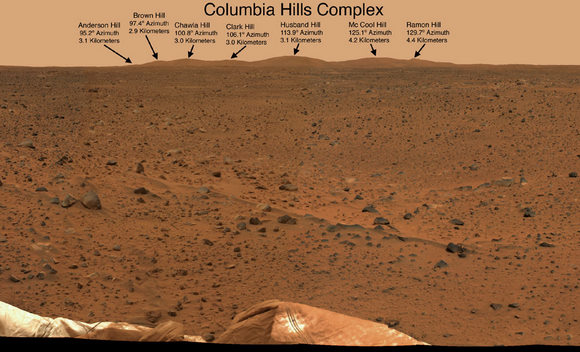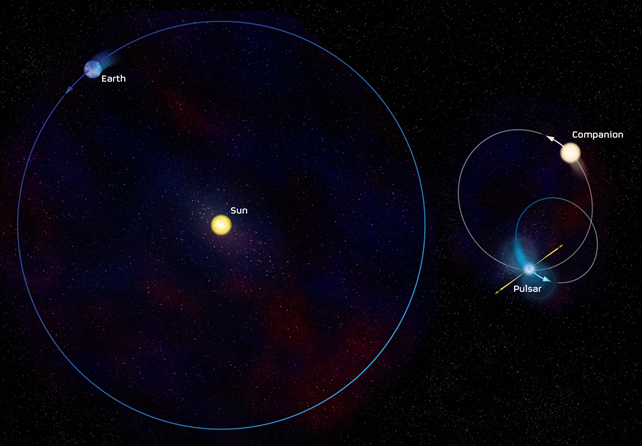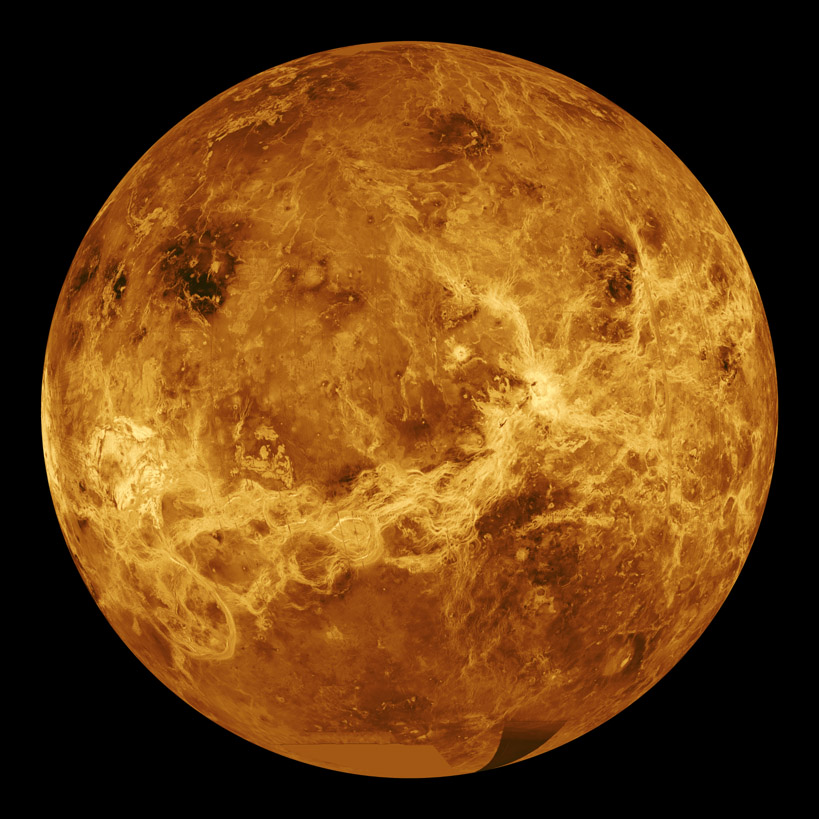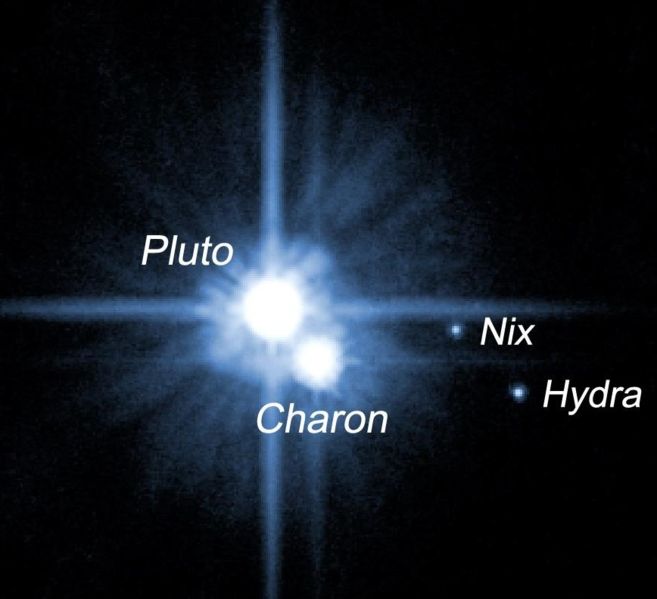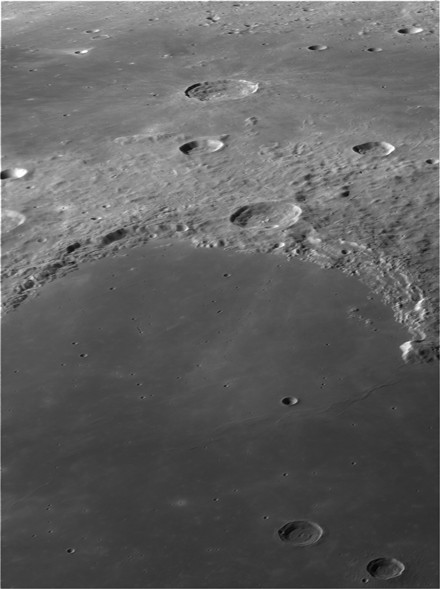“Everybody dancing in the moonlight… Dancing in the moonlight… Everybody feeling warm and bright… It’s such a fine and natural sight… Everybody dancing in the moonlight.” Oh! Greetings, fellow SkyWatchers! Pardon me while I celebrate the return of Spring and enjoy viewing the Moon. This weekend will be a terrific time for you to dance, too. Talk a waltz around the “Bay of Rainbows” as you view Sinus Iridum and enjoy the cool blues with Spica. You’ll be seeing double before the weekend is out. Time to dust off the optics and turn and eye to the sky, because… Here’s what’s up!
Friday, May 16, 2008 – Tonight would be a wonderful opportunity for Moongazers to return to the surface and have a look at the peaceful Sinus Iridum area. If you’ve been clouded out before, be sure to have a look for the telescopic Lunar Club challenges Promontoriums Heraclides and LaPlace. What other craters can you discover in the area?
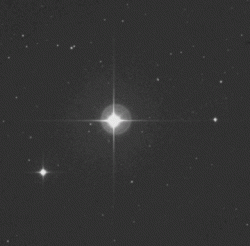
If you’re up for a bit more of a challenge, then let’s head about 59 light-years away for star 70, in Virgo. You’ll find it located about six degrees northeast of Eta (RA 13 28 25 Dec +13 46 43) and right in the corner of the Coma-Boötes-Virgo border. So what’s so special about this G-type, very normal-looking, 5th magnitude star?
It’s a star that has a planet.
Long believed to be a spectroscopic binary because of its 117 day shift in color, closer inspection has revealed that 70 Virginis actually has a companion planet. Roughly seven times larger than Jupiter and orbiting no further away than Mercury from its cooler-than-Sol parent star, 70 Virginis B just might well be a planet cool enough to support water in its liquid form. How “cool” is that? Try about 85 degrees Celsius…
Saturday, May 17, 2008 – Today in 1835, J. Norman Lockyer was born. While that name might not stand out, Lockyer was the first to note previously unknown absorption lines while making visual spectroscopic studies of the Sun in 1868. Little did he know at the time, he had correctly identified the second most abundant element in our universe – helium – an element not discovered on Earth until 1891! Also known as the “Father of Archeoastronomy,” Sir Lockyer was one of the first to make the astronomical connection with ancient structures such as Stonehenge and the Egyptian pyramids. (As a curious note, 14 years after Lockyer’s notation of helium, a Sun-grazing comet made its appearance in photographs of the solar corona taken during a total eclipse in 1882… It hasn’t been seen since.)
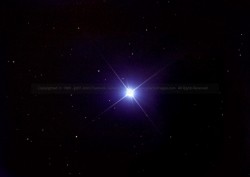 If you would like to see a helium-rich star, look no further tonight than Alpha Virginis – Spica. You can’t miss it because it’s so near the Moon! As the sixteenth brightest star in the sky, this brilliant blue-white “youngster” appears to be about 275 light-years away and is about 2300 times brighter than our own Sun. Although we cannot see it visually, Spica is a double star. Its spectroscopic companion is roughly half its size and is also rich in helium.
If you would like to see a helium-rich star, look no further tonight than Alpha Virginis – Spica. You can’t miss it because it’s so near the Moon! As the sixteenth brightest star in the sky, this brilliant blue-white “youngster” appears to be about 275 light-years away and is about 2300 times brighter than our own Sun. Although we cannot see it visually, Spica is a double star. Its spectroscopic companion is roughly half its size and is also rich in helium.
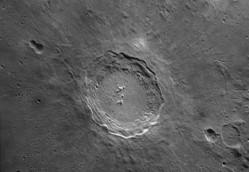 Sunday, May 18, 2008 – On this day in 1910, Comet Halley transited the Sun, but could not be detected visually. Since the beginning of astronomical observation, transits, eclipses and occultations have provided science with some very accurate determinations of size. Since Halley could not be spotted against the solar surface, we knew almost a century ago that the nucleus had to be smaller than about 100 kilometers. To get a rough idea of this size, take a look at crater Copernicus about midway along the western hemisphere of the Moon. What’s its diameter? Oh, about the same size as a certain comet!
Sunday, May 18, 2008 – On this day in 1910, Comet Halley transited the Sun, but could not be detected visually. Since the beginning of astronomical observation, transits, eclipses and occultations have provided science with some very accurate determinations of size. Since Halley could not be spotted against the solar surface, we knew almost a century ago that the nucleus had to be smaller than about 100 kilometers. To get a rough idea of this size, take a look at crater Copernicus about midway along the western hemisphere of the Moon. What’s its diameter? Oh, about the same size as a certain comet!
Now let’s have a look at a very bright and changeable lunar feature which is often overlooked. Starting with the great grey oval of Grimaldi, let your eyes slide along the terminator toward the south until you encounter the bright crater Byrgius. Named for Joost Bürgi, who made a sextant for Tycho Brahe, this “seen on the curve” crater is really quite large with a diameter of 87 kilometers. Perhaps its most interesting feature is the high-albedo Byrgius A, which sits along its eastern wall line and produces a wonderfully bright ray system. While it’s noted as a Lunar Club II challenge, it’s also a great crater to help add to your knowledge of selenography!
It’s time to add to our double star list as we hunt down Zeta Boötes located about seven degrees southeast of Arcturus (RA 14 41 08 Dec +13 43 42). This is a delightful multiple star system for even small telescopes – but not an easy one. The Zeta pairing has an extremely elliptical orbit: the distance between the stars varies from as little as the Earth-Sun distance to as much as 1.5 times the radius of Pluto’s orbit!
Another great target for a bright night is Delta Corvi (RA 12 29 51 Dec -16 30 55). 125 light-years away, it displays a yellowish-colored primary and a slightly blue secondary that’s an easily split pair in any telescope, and a nice visual double with Eta in binoculars. Use low power and see if you can frame this bright grouping of stars in the same eyepiece field.
Wising you good luck, clear skies and a wonderful weekend! 😉
This week’s awesome photos are of Sinus Iridum and Copernicus by the one and only Wes Higgins, 70 Virginis – Credit: Palomar Observatory, courtesy of Caltech and Alpha Virginis: Spica, by none other than the incredibly talented John Chumack. Spectacular!

